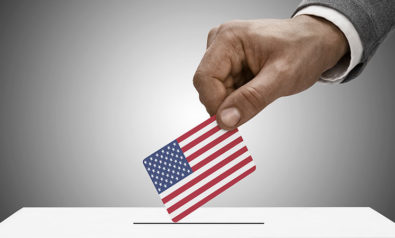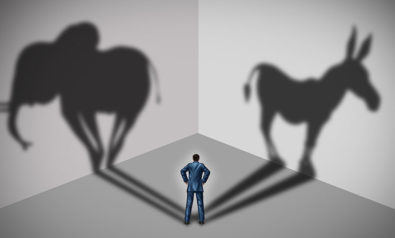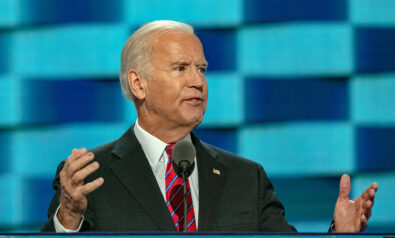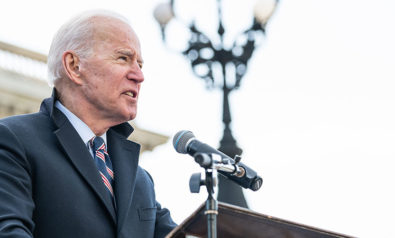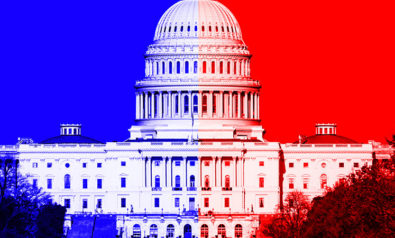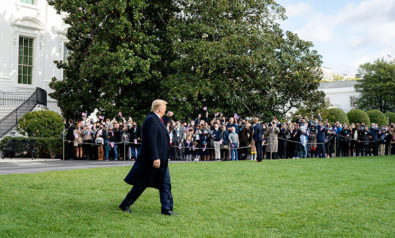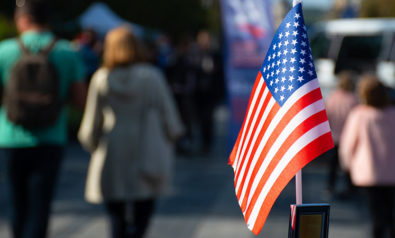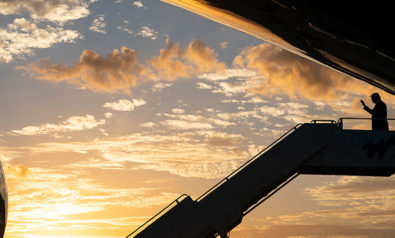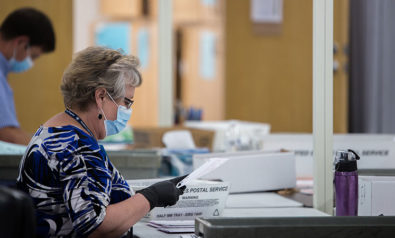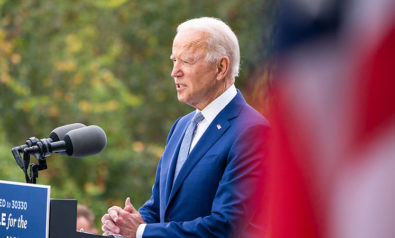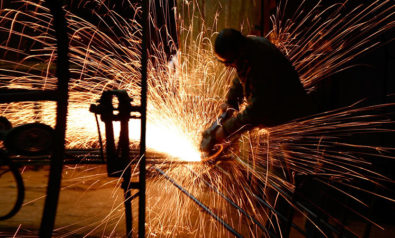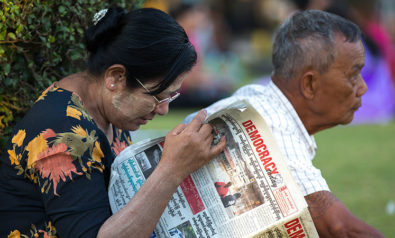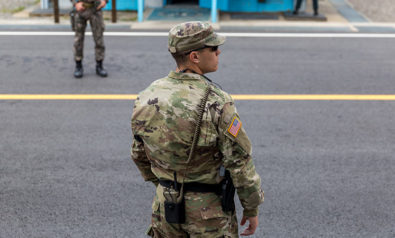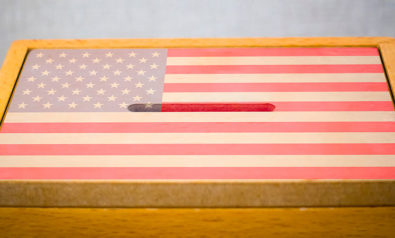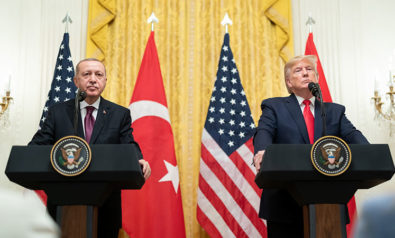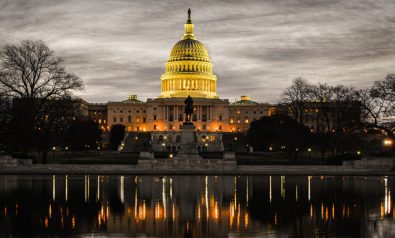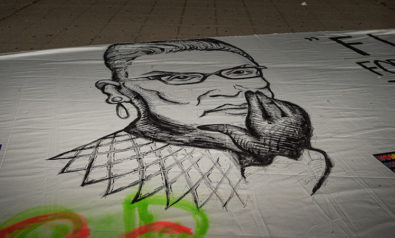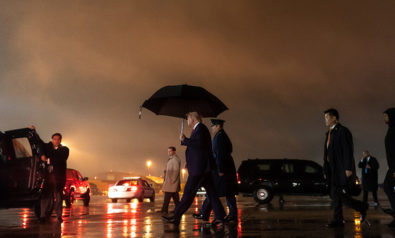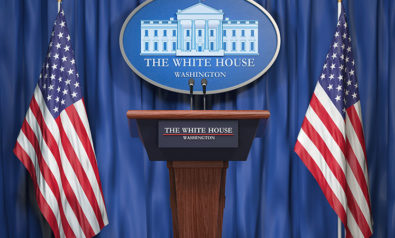Few Americans these days are likely to recognize the name Thomas Nast. Yet in the Civil War era, Nast was arguably the most famous cartoonist in the United States, responsible for creating and popularizing iconic images, such as “jolly St. Nick” (aka Santa Claus), Uncle Sam and the donkey and the elephant — symbols of the Democrats and Republicans ever since. Nast’s fame was reflected in the Overseas Press Club of America’s decision, in 1978, to name their annual award for best cartoons on international affairs after him.
Yet 40 years later, the Press Club decided to wipe Nast’s name clean of the official title of the award. This came at the heel of the controversy, a few years earlier, provoked by Nast’s nomination for induction into New Jersey’s Hall of Fame. The nomination, his third in four years, once again ended in failure, despite Nast’s merits of having exposed the corruption of New York’s infamous Tammany Hall boss William M. Tweed, and despite his commitment to the anti-slavery cause and racial equality.
When God Hates America
Unfortunately, Nast had a serious blind spot: a pronounced hostility to the country’s Catholic, and particularly Irish Catholic immigrant, community. Nast routinely portrayed the Irish as drunkards with ape-like features, bent on creating havoc; one cartoon has an Irishman sitting on a powder keg, a bottle in one hand, a torch in the other. His famous cartoon, “The American River Ganges,” was a perfect expression of the way Protestant Americans viewed the influx of European Catholics. It depicts Catholic bishops as crocodiles crawling onto American shores bent on attacking innocent schoolchildren.
Blind Spot
Nast’s kind of bigotry was hardly something new. Anti-Catholic sentiments ran rampant throughout the 19th century, starting with the massive influx of Irish and southern German Catholics in the 1840s and 1850s, regaining steam in the decades of the Civil War, with the emergence of the American Protective Association and a wave of pamphlets peddling anti-Catholic conspiracy theories, most famously the claim that the Catholic Church had been behind the assassination of Abraham Lincoln.
Catholics were generally regarded with suspicion, if not outright fear, as an alien force sent by the pope to subvert the country’s republican institutions and destroy democracy in the United States. Even those who would concede that these allegations were highly exaggerated maintained that Catholic immigrants were not in a position to act as responsible citizens, lacking the independence of mind indispensable for being a good democrat. They were deemed to be under the influence of the pope and priests, who, in turn, were charged with being fundamentally hostile to American democracy.
Most of its detractors maintained that the Catholic faith was fundamentally incompatible with the basic values that informed the American republic. Nativist and white supremacist organizations in the 1920s, most notoriously the second Ku Klux Klan, routinely targeted the country’s growing Catholic community.
It took more than a century for American Catholics to be accepted as fully equal citizens. In 1937, when Gallup first asked the question, no more than 60% of respondents said they would vote for a Catholic presidential candidate. It took until the late 1970s that that number surpassed the 90% mark. As late as 2003, a prominent book on anti-Catholicism referred to it as the “last acceptable prejudice” in the United States. Some 15 years later, a commentary in the Catholic News Agency charged that it was “becoming more and more obvious that the Catholic Church is being targeted as the public enemy of our society.” For the author, a retired bishop from New Jersey whose diocese was marred in sex abuse scandals during his tenure, the main reason for anti-Catholic hostility was the church’s standing firm on “her teaching on contraception, abortion, stem cell research, in-vitro fertilization, marriage and divorce.”
This is one side of the story and certainly an important one that must not be ignored or trivialized. For large parts of American history, Catholics represented a besieged minority, particularly if they happened to be of Irish or Italian descent. At the same time, however, as the size of the Catholic immigrant community grew in size, so did its influence. Many in the first wave of Catholic immigrants settled in large northeastern cities, such as New York and Boston, where they quickly became a major political factor, primarily for the Democratic Party, which built a whole patronage system on the largely Irish Catholic vote. From this perspective, Nast’s crusade against New York City’s Tammany Hall and his anti-Irish cartoons acquire a certain logic.
It is also a fact that the American Catholic Church actively opposed abolitionism in the United States. And it is also a fact that there was little love lost between the Irish, and later Italian, immigrant communities and the African American minority, with animosities coming from both sides. Catholic immigrants had always voted for the Democratic Party, and the outcome of the Civil War only strengthened the association, as did Lincoln’s Republican Party’s association with the anti-Catholic cause, albeit rather subtle, even if it was well known that in some parts of the country there were strong ties between the Republicans and the American Protective Association.
Historical Irony
It is important to keep this in mind in order to appreciate the significance of the role of the Catholic vote for the November election. Gone are the days when Catholics formed a dependable vote bank for the Democratic Party, when the Republicans were seen biased, if not hostile, to the Catholic faith. In 2016, according to Pew Research, 56% of registered Catholics voted for Trump, 44% for Hillary Clinton. Generally, nowadays, about half of registered Catholic voters identify themselves more or less as Republicans; roughly the same share more or less as Democrats. This implies that the Catholic vote is a perfect reflection of the pronounced political polarization and partisanship that has characterized the country as a whole for the past few decades.
At the same time, Catholics are no longer considered unfit for high political offices, their republican credentials questioned, as was still the case when John F. Kennedy ran for office. To be sure, this has not yet played itself out with respect to the presidency. Joe Biden, if elected, would only be the second Catholic to be elected to the country’s highest political office. It is, however, the case for the other branches of the American political system — the Congress and particularly the Supreme Court. It is perhaps one of the great ironies of American history that today, the majority of the Supreme Court justices who are supposed to interpret and uphold the Constitution of the United States happen to be Catholics — members of a faith that once was considered anathema to everything the country stood for, or at least claimed to stand for.
With the passing away of Ruth Bader Ginsburg on September 18, the Supreme Court has once again become a focal point of attention. This might appear a bit strange. After all, the Supreme Court is generally seen as “‘the least dangerous branch’ because it can only tell you what the law means.” Its principal task is “to settle conflicting judgments from lower courts, and determine whether laws are in conflict with the Constitution or other federal laws.”
This, however, is not how America’s Christian fundamentalists see it. For them, the Supreme Court is the one crucial institution that is in a position to reverse what they consider the greatest abomination in American legal history, Roe vs. Wade, the decision that made abortion legal countywide. President Donald Trump’s choice of Amy Coney Barrett, a devout Catholic and mother of seven (two of the children by adoption), to fill the vacant seat on the Supreme Court is, therefore, of supreme significance. Not only because it would tilt the court decisively to the right, but also because it might help sway the outcome of the November election in Trump’s favor, particularly with respect to the Hispanic Catholic vote.
In a recent commentary in The New York Times, Linda Chavez called upon the Democrats not to take the Hispanic vote for granted. In 2016, almost 30% of Hispanics voted for Trump, despite his blatant denigration of migrants from south of the border. There are numerous reasons for the way Hispanics vote the way they do, not least their national origins. And there is the religious factor. As Chavez points out, a growing number of Hispanics identify themselves as Protestants or even evangelicals, and as such are more prone to vote for Trump.
In addition, there is the question of abortion — an abomination to evangelicals and devout Roman Catholics alike. In a recent poll, more than 50% of Hispanic Catholics thought abortion should be illegal in most or all cases. In fact, Hispanics were the only distinct ethnic group to think so. Among white Catholics, for instance, roughly 40% took the pro-life position. To complicate things even more, a study from 2007 found a marked difference between first and second-generation American Hispanics on the question of abortion. Among the former, almost two-thirds indicated at the time that it should be illegal; among the latter, only a bit more than 40% thought so.
God’s Tool
In an earlier article, I have suggested that Trump’s core constituency, evangelicals and devout Catholics, have supported him not because they believe he is a man of God — he quite clearly is the opposite, all his pretending notwithstanding — but because they believe he is “God’s tool.” Ginsburg’s passing away a few weeks before the election, allowing Trump to choose an avowed abortion opponent to fill her seat, cannot but strengthen their belief that the president is on a mission from God. Trump, of course, has far more mundane motives, first and foremost to lock in all the conservative, reactionary and far-right groups in American society that might put him over the edge in crucial states.
There is a certain irony to the fact that the most widely loathed president, both at home and abroad, in recent American history might be put in a position to impose himself for four more years both on the United States and the world at large with the help of a community that for a long time in the past was one of the most disparaged, if not outright abhorred religious minority in America. One might be tempted to see in this an instance of belated revenge for the treatment received in the past. As the good book states in Romans 12:19, “Vengeance is mine; I will repay, saith the Lord.” Poor Thomas Nast must be spinning like a mad top in his grave.
The views expressed in this article are the author’s own and do not necessarily reflect Fair Observer’s editorial policy.
Support Fair Observer
We rely on your support for our independence, diversity and quality.
For more than 10 years, Fair Observer has been free, fair and independent. No billionaire owns us, no advertisers control us. We are a reader-supported nonprofit. Unlike many other publications, we keep our content free for readers regardless of where they live or whether they can afford to pay. We have no paywalls and no ads.
In the post-truth era of fake news, echo chambers and filter bubbles, we publish a plurality of perspectives from around the world. Anyone can publish with us, but everyone goes through a rigorous editorial process. So, you get fact-checked, well-reasoned content instead of noise.
We publish 2,500+ voices from 90+ countries. We also conduct education and training programs
on subjects ranging from digital media and journalism to writing and critical thinking. This
doesn’t come cheap. Servers, editors, trainers and web developers cost
money.
Please consider supporting us on a regular basis as a recurring donor or a
sustaining member.
Will you support FO’s journalism?
We rely on your support for our independence, diversity and quality.



